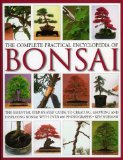![]()
I have a youtube channel with over 1000 Videos!
Bonsai Tutorials
- Bonsai Home
- Bonsai Basics
- Growing Bonsai from Seed
- Philosophy and Spirituality of Bonsai
- Bonsai Books
- Buy Bonsai
- Bonsai Supplies and Tools
- Bonsai Kits and trees for beginners
- Bonsai Pots
- Figurines and Accessories
- About your first bonsai
- Watering
- Re-potting
- Care Time line
- Bonsai Growing Tips
- Bonsai words and terms
- Easy Bonsai trees
- Troubleshooting an ailing Bonsai Tree
- How to transplant Bonsai
- Bonsai DVD's
- Bonsai Seed Kits
- Types of Bonsai Seeds
- Scarification and stratification of bonsai seeds
- Chart for germinating Bonsai seeds
Bonsai Projects
- Project List
- My Bonsai Videos
- Transplanting small seedlings
- Bonsai over time
- Bonsai under a grow light
- Growing Bonsai from cuttings
- Bonsai from seedlings
More about Bonsai
- Instructional Bonsai Videos
- Bonsai Museums
- The philosophy of bonsai or the real reason for growing them
- Bonsai styles with illustrations
- History of Bonsai
Supplies, Books & More
- Bonsai trees and kits for absolute beginners
- Artificial Bonsai Trees
- Bonsai tools and supplies
- Bonsai Stands
- Bonsai Prints and Posters
- Pics of Bonsai pots with some basic information about them
- USA Zone Map
- Bonsai Magazines
Specific Bonsai Trees
- Types of bonsai seeds Main
- Types of bonsai Trees Main
- Tamarind
- Chinese Elm
- Japanese Pagoda
- Nomura Red Maple
- Japanese Hornbeam
- Japanese Firethorn
- Cider Gum Eucalyptus
- Japanese Wisteria
- Miniature Jade
- Dwarf Arboricola
- Silver Birch
- Persian Pink Silk Mimosa
- Dwarf Mountain Pine
- Red Maple
Other Subjects
- Origami
- Tatebanko
- World Travel
- Terrariums
- Nature Projects
- Beekeeping
- Medieval Projects
- Medieval Castles
- Telescope Nerd
- Press/Media

- Support Will with Patreon or PayPal

Hi, Thanks for visiting my website. My name is Will and if you have questions
or would like to
contribute projects or ideas you can contact me 



